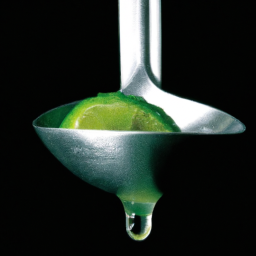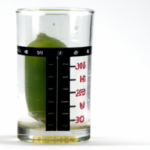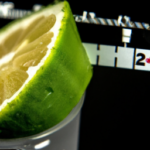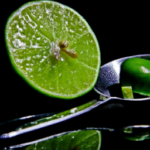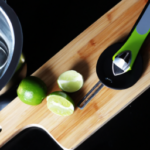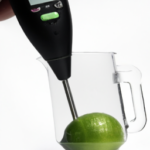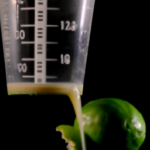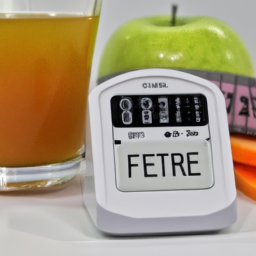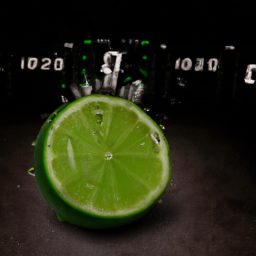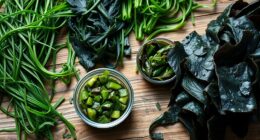Lime juice is essential in many recipes, including cocktails, salad dressings, marinades, and sauces. As someone who loves to cook and try new things in the kitchen, I often wonder how much juice can be squeezed from a single lime.
But not all limes are created equal – their size, age, and ripeness can all affect the amount of juice they yield. So, how much juice can you expect to get from half a lime?
Before we can answer that question, it’s important to understand the factors that can impact lime juice yield. By knowing what to look for when selecting limes and how to maximize juice extraction, you can ensure that you’re getting the most out of your citrus.
In this article, we’ll explore the science behind lime juice yield and share tips for measuring, maximizing, and substituting lime juice. Whether you’re a seasoned cook or just starting out, this guide will help you make the most of your limes and elevate your dishes to the next level.
Key Takeaways
- The amount of juice in half a lime is approximately 1 tablespoon, but can vary based on factors such as ripeness and juiciness.
- Accurate measurement of lime juice is crucial for achieving desired flavor and consistency in recipes.
- Rolling the lime on a hard surface and using a citrus juicer or reamer can help maximize juice yield.
- Fresh lime juice is a nutritious source of vitamin C and antioxidants, and incorporating it into one’s diet can be a penny-wise investment in health.
Factors that Affect Lime Juice Yield
When it comes to getting the most juice out of a lime, there are a few key factors to consider. Firstly, the ripeness of the lime can greatly affect the amount of juice you can extract. A ripe lime will generally yield more juice than an unripe one.
Additionally, the juiciness of the fruit itself and the method of juice extraction can also impact the final yield. By understanding these factors, you can optimize your lime juice yield and ensure you get the most out of your fruit.
Ripeness of the Lime
The lime’s ripeness affects the amount of juice you can extract from half of it. Ripeness measurement is one of the most important factors that determine the juice yield of a lime. As a lime ripens, it becomes softer and juicier, which means you can extract more juice from it. However, the acidity of the lime juice decreases as the fruit ripens.
Here are five important things to know about how the ripeness of a lime affects its juice yield:
- The juiciest limes are the ones that are plump, have smooth skin, and feel heavy for their size.
- Overripe limes that have started to turn yellow or have soft spots will yield less juice than a firm, green lime.
- If you’re using a lime that isn’t very juicy, try rolling it on a hard surface before cutting it in half. This can help break down the fibers and release more juice.
- Limes that are picked too early will be hard and dry and won’t yield much juice.
- The acidity of lime juice can affect the taste of your dishes. Ripe limes have lower acidity, which means they’re less sour than unripe limes.
Understanding how the ripeness of a lime affects its juice yield is important when cooking or making drinks that require lime juice. However, the juiciness of the fruit is also an important factor to consider, which we’ll explore in the next section.
Juiciness of the Fruit
You can feel the burst of freshness in every bite when you sink your teeth into a perfectly juicy lime. The juiciness of the fruit is one of the most important factors that determine its taste and usefulness in cooking.
In order to measure the juiciness of a lime, we can use a simple method: cut it in half and gently squeeze it over a measuring cup. The amount of juice that comes out can vary depending on the lime’s ripeness, but generally, a half lime can yield around 1-2 tablespoons of juice.
When it comes to taste preference, some people prefer a more tart and acidic flavor, while others prefer a sweeter taste. The juiciness of the lime can also affect its taste, as a juicier fruit can have a more diluted flavor compared to a drier one. This is why it’s important to choose the right lime for your recipe, depending on the taste you want to achieve.
Now that we know how to measure the juiciness of a lime, let’s move on to the next section and learn about the different methods of juice extraction.
Method of Juice Extraction
To extract the flavorful juice from a lime, it’s essential to choose the right method of extraction. There are two main methods: manual and electric.
Here are the pros and cons of each method for lime juice extraction:
-
Manual extraction: This method involves using a handheld citrus juicer or a fork to extract the juice. The advantages of manual extraction are that it’s inexpensive, requires no electricity, and gives you more control over the amount of pulp in the juice. However, manual extraction can be time-consuming and requires some physical effort.
-
Electric extraction: This method involves using an electric citrus juicer to extract the juice. The advantages of electric extraction are that it’s fast, easy, and requires less physical effort. However, electric juicers can be expensive, take up more space, and may not give you as much control over the amount of pulp in the juice.
Now that we’ve discussed the pros and cons of each method, let’s move on to a general guideline for lime juice yield.
General Guideline for Lime Juice Yield
Typically, squeezing a half of a lime will yield around 1 tablespoon of juice, but this can vary depending on the ripeness and size of the lime. When measuring lime juice for a recipe, it’s important to be as accurate as possible.
Using too little or too much juice can significantly alter the flavor and texture of the dish. To ensure the proper amount of juice is used, it may be helpful to use a citrus juicer or a small handheld reamer to extract the juice.
It’s also important to note that the temperature can affect the yield of juice, with warmer limes yielding more juice than colder ones. By following general guidelines and accurately measuring lime juice, the desired flavor and texture of a dish can be achieved.
This is crucial in achieving the perfect balance of flavors and ultimately, a successful dish.
Importance of Measuring Lime Juice
When it comes to cooking or making drinks with lime juice, measuring is crucial in achieving the desired flavor and consistency in recipes. As someone who’s experimented with different measurements, I’ve found that even a slight variation in the amount of lime juice can make a big difference in the final product.
Measuring also helps avoid waste by ensuring that you only use the necessary amount of limes for your recipe.
Achieving the Desired Flavor
Achieving the perfect flavor for your dish requires just the right amount of juice squeezed from half a lime. This is because lime juice can easily overpower other flavors in your dish if too much is added. On the other hand, if too little is added, the lime flavor may not be noticeable at all. Therefore, it’s important to measure the lime juice accurately to achieve proper flavor balance.
Recipe modifications may also be necessary to achieve the desired flavor. For instance, if you find that adding the juice from half a lime is still too much for your recipe, you can decrease the amount of lime juice by a few drops or adjust the other ingredients to balance out the flavor.
It’s important to remember that achieving the perfect flavor is a process of trial and error, and it may take a few adjustments to get it just right. With practice, you’ll learn to measure the lime juice accurately and make recipe modifications to achieve your desired flavor.
Moving on to the next section, consistency in recipes is also crucial in achieving a perfect dish.
Consistency in Recipes
To make sure your dish turns out consistently delicious, you’ll want to pay close attention to the measurements of each ingredient and how they’re prepared. Recipe consistency is key to achieving the desired flavor and texture every time you cook.
To achieve this, here are some tips to keep in mind:
-
Use measuring tools: Measuring spoons, cups, and scales are essential to ensure accuracy in your recipes. Eyeballing ingredients can lead to inconsistencies and ruin the final result.
-
Follow the recipe instructions: Every recipe is different, and following the instructions precisely can help you achieve the intended flavor and texture. Deviating from the recipe can lead to unwanted variations.
-
Keep track of changes: If you decide to make changes to the recipe, it’s important to document them. This can help you make adjustments in the future and maintain recipe consistency.
-
Practice makes perfect: Consistency comes with practice, so don’t be discouraged if your first few attempts don’t turn out as expected. Keep trying, and eventually, you’ll get the hang of it.
Maintaining recipe consistency and measuring accuracy not only ensures a delicious dish but also avoids waste. By following these tips, you’ll be able to create consistent recipes every time, minimizing the chances of throwing away ingredients and food.
Avoiding Waste
By avoiding unnecessary waste in the kitchen, I can save money and contribute to a more sustainable lifestyle. When it comes to using limes, there are several ways to avoid wasting them.
If I only need half a lime for a recipe, I can wrap the remaining half tightly in plastic wrap or store it in an airtight container in the refrigerator. Leftover lime can also be used in a variety of creative and delicious recipes, such as limeade, lime-infused water, or even in a marinade for meats.
One of my favorite ways to use leftover lime is to make a simple lime vinaigrette. I can mix the juice of a leftover lime with olive oil, honey, and a pinch of salt and pepper to make a tangy and flavorful dressing for salads or roasted vegetables. By finding ways to use all parts of the lime, I can minimize waste and make the most out of my ingredients.
Speaking of making the most out of ingredients, there are also tips and tricks for maximizing lime juice yield that can be useful in the kitchen.
Tips for Maximizing Lime Juice Yield
You’ll love these tricks for getting the most juice out of your limes! To maximize lime juice yield, here are some juice extraction techniques that I find helpful:
-
Roll the lime on a hard surface before cutting it. This helps break down the lime’s fibers, making it easier to extract the juice.
-
Cut the lime in half crosswise, not lengthwise. This exposes more of the pulp and makes it easier to squeeze.
-
Use a citrus juicer or reamer to extract the juice. This method is more efficient than squeezing the lime by hand.
-
Grate the lime zest before juicing it. The zest contains flavorful oils that can enhance the taste of the juice.
Using these techniques, you can extract the most juice from your limes and avoid wasting any of the fruit.
However, if you find that you still don’t have enough juice, there are alternative lime juice sources that you can explore.
Alternative Lime Juice Sources
If you’re running low on lime juice, consider other citrus fruits as a substitute. Lemons, oranges, and grapefruits are all great alternatives that can provide the same acidic flavor as lime juice.
Each fruit has its own unique benefits and drawbacks to consider when making your choice. Lemons, for example, have a slightly sweeter flavor profile than limes and are high in vitamin C. However, they can also be more tart and acidic, which may affect the overall taste of your dish.
Oranges, on the other hand, are sweeter and less acidic than limes, providing a milder flavor profile that can complement a wider range of dishes.
Grapefruits, with their distinct bitter taste, are best used in drinks or desserts that require a tart and tangy flavor.
Understanding the benefits and drawbacks of each alternative can help you choose the best option for your specific recipe.
When it comes to substitutions for lime juice, it’s important to consider the different flavor profiles and levels of acidity that each citrus fruit can provide. By understanding the benefits and drawbacks of each option, you can make informed decisions about which fruits to use in your recipes.
Substitutions for Lime Juice
When substituting lime juice in a recipe, it’s essential to consider the unique taste profiles and levels of acidity of other citrus fruits. Here are some options to consider:
-
Lemon juice is a common substitution for lime juice as it has a similar level of acidity and a tangy, citrusy flavor. However, it may not provide the same depth of flavor as lime juice.
-
Grapefruit juice has a slightly sweeter taste than lime juice, but it still has a high level of acidity that can work well in certain recipes.
-
Orange juice has a lower level of acidity than lime juice, but it can still provide a citrusy flavor that complements other ingredients in a recipe.
-
Pineapple juice has a sweeter taste than lime juice but can still provide a tropical flavor that works well in certain dishes.
-
While not a citrus fruit, apple cider vinegar has a tangy, acidic taste that can work as a substitute for lime juice in some recipes.
When considering substitutions for lime juice, it’s important to keep in mind your taste preferences and the flavors of the other ingredients in the recipe. Some substitutions may work better than others depending on the dish.
However, it’s also important to note that fresh lime juice can provide a unique and irreplaceable flavor in certain recipes. The importance of fresh lime juice can’t be overlooked as it adds a burst of citrusy flavor that can’t be replicated by substitutes. Using fresh lime juice can elevate a dish and bring out the best in other ingredients.
So, while substitutions can work in a pinch, fresh lime juice is always the best option for achieving the full flavor potential of a recipe.
Importance of Fresh Lime Juice
When it comes to cooking and mixology, I always prioritize using fresh lime juice. Not only does it add a bright and zesty flavor to dishes and cocktails, but it also contains essential nutrients like vitamin C, antioxidants, and flavonoids.
While bottled lime juice may seem like a more cost-effective option, the flavor and nutritional value simply can’t compare to freshly squeezed juice.
Flavor
You’ll love the burst of tangy flavor that 1/2 lime adds to your juice! The flavor profile of fresh lime juice is unbeatable and can enhance the taste of any recipe. Whether you’re making a refreshing summer drink or adding a zingy twist to your cooking, lime juice is a must-have ingredient.
To give you an idea of just how much flavor you can get from 1/2 lime, take a look at the following table:
| Lime Size | Juice Yield | Juice Volume |
|---|---|---|
| Small | 1-2 tbsp | 1/2 – 1 oz. |
| Medium | 2-3 tbsp | 1 – 1 1/2 oz. |
| Large | 3-4 tbsp | 1 1/2 – 2 oz. |
As you can see, even half a small lime can yield up to 1 oz. of juice! This means you can add a lot of flavor to your recipes with just a tiny amount of lime juice. So go ahead and experiment with different recipe applications, from marinades and dressings to cocktails and smoothies.
Next, let’s talk about the nutritional value of lime juice and how it can benefit your health.
Nutritional Value
Get ready to boost your health with the nutritional benefits found in fresh lime, which can positively impact your overall well-being. Lime juice benefits go beyond just its refreshing taste.
Here are some reasons why you should incorporate lime juice in your diet:
-
High in vitamin C: Lime juice is an excellent source of vitamin C, which helps boost your immune system, protects your skin from damage, and aids in wound healing.
-
Promotes digestion: Lime juice can help stimulate the digestive system, preventing constipation and reducing bloating.
-
Reduces inflammation: The antioxidants in lime juice can help reduce inflammation in the body, which is linked to various chronic diseases.
-
Lowers blood sugar levels: Lime juice has been shown to have a blood-sugar-lowering effect, making it beneficial for those with diabetes.
-
Lime juice vs lemon juice: Though both citrus fruits are good sources of vitamin C, lime juice has slightly more antioxidants and a lower glycemic index than lemon juice.
Incorporating lime juice into your diet can be a cost-effective way to improve your overall health.
Cost-effectiveness
Incorporating fresh lime into your diet can be a penny-wise investment in your health. While it may seem more cost-effective to opt for bottled lime juice, the nutritional benefits of fresh lime far outweigh the cost difference.
Not only is fresh lime juice rich in vitamin C and antioxidants, but it also aids in digestion and weight loss. To maximize cost savings, consider bulk lime juice procurement.
Buying limes in bulk and juicing them yourself can save money in the long run. Additionally, freezing lime juice in ice cube trays can prevent waste and prolong the shelf life of the juice. Investing in a citrus juicer can also make the process more efficient and less time-consuming.
By incorporating these cost-saving methods, you can enjoy the health benefits of fresh lime without breaking the bank.
Frequently Asked Questions
How long can lime juice be stored before it goes bad?
I’ve found that lime juice can be stored for up to a week in the refrigerator before it starts to lose its freshness. To preserve its flavor and quality, it’s best to store it in an airtight container.
Can you use bottled lime juice instead of fresh lime juice?
Using bottled lime juice is a convenient option, but there may be a noticeable difference in taste due to lower acidity levels. Fresh lime juice offers a brighter, more complex flavor. As a scientist, I recommend using fresh lime juice whenever possible.
What is the nutritional value of lime juice?
Lime juice is loaded with vitamins and minerals, including vitamin C and potassium. These nutrients help support skin health, boost immunity, and aid in digestion. Incorporate lime juice into your diet with delicious lime juice recipes.
How do you know if a lime is ripe enough to yield enough juice?
To assess lime ripeness, feel for firmness and look for a rich green color. Optimal storage conditions are cool and dry. Properly ripened limes will yield more juice and have a stronger flavor.
Are there any health benefits to drinking lime juice?
Drinking lime juice has numerous health benefits, including boosting immunity, aiding digestion, and promoting healthy skin. It can be incorporated into recipes as a flavorful addition to marinades, dressings, and cocktails.
Conclusion
In conclusion, measuring the amount of lime juice needed in a recipe is crucial to achieving the desired flavor and balance. It’s important to understand the factors that affect lime juice yield and to use a general guideline when measuring. By using the tips for maximizing lime juice yield, you can ensure that you’re getting the most out of your limes.
When it comes to lime juice, freshness is key. The taste of fresh lime juice is unparalleled and can’t be replicated by bottled or canned juice. So, next time you’re in the kitchen, take a moment to appreciate the zesty aroma of a fresh lime and remember that every drop counts.
With a little practice and the right techniques, you can master the art of extracting the perfect amount of juice from each lime.
Ilana has been a vegan for over 10 years. She originally made the switch for health reasons, but soon found herself becoming more and more passionate about the ethical and environmental implications of a vegan lifestyle. Ilana is the author of The Graceful Kitchen, a blog all about veganism. She loves to cook up delicious and nutritious vegan meals, and share her recipes with others who are interested in leading a cruelty-free life. Ilana is also a strong advocate for using whole foods as the foundation of a healthy diet, and believes that going vegan is one of the best ways to achieve this.
